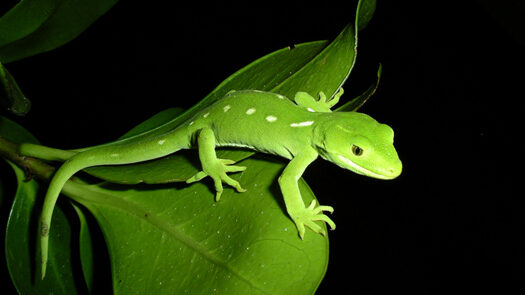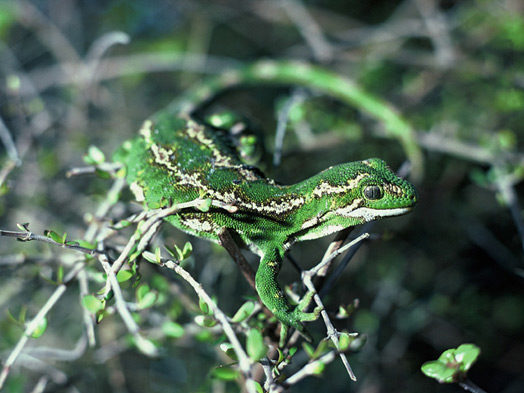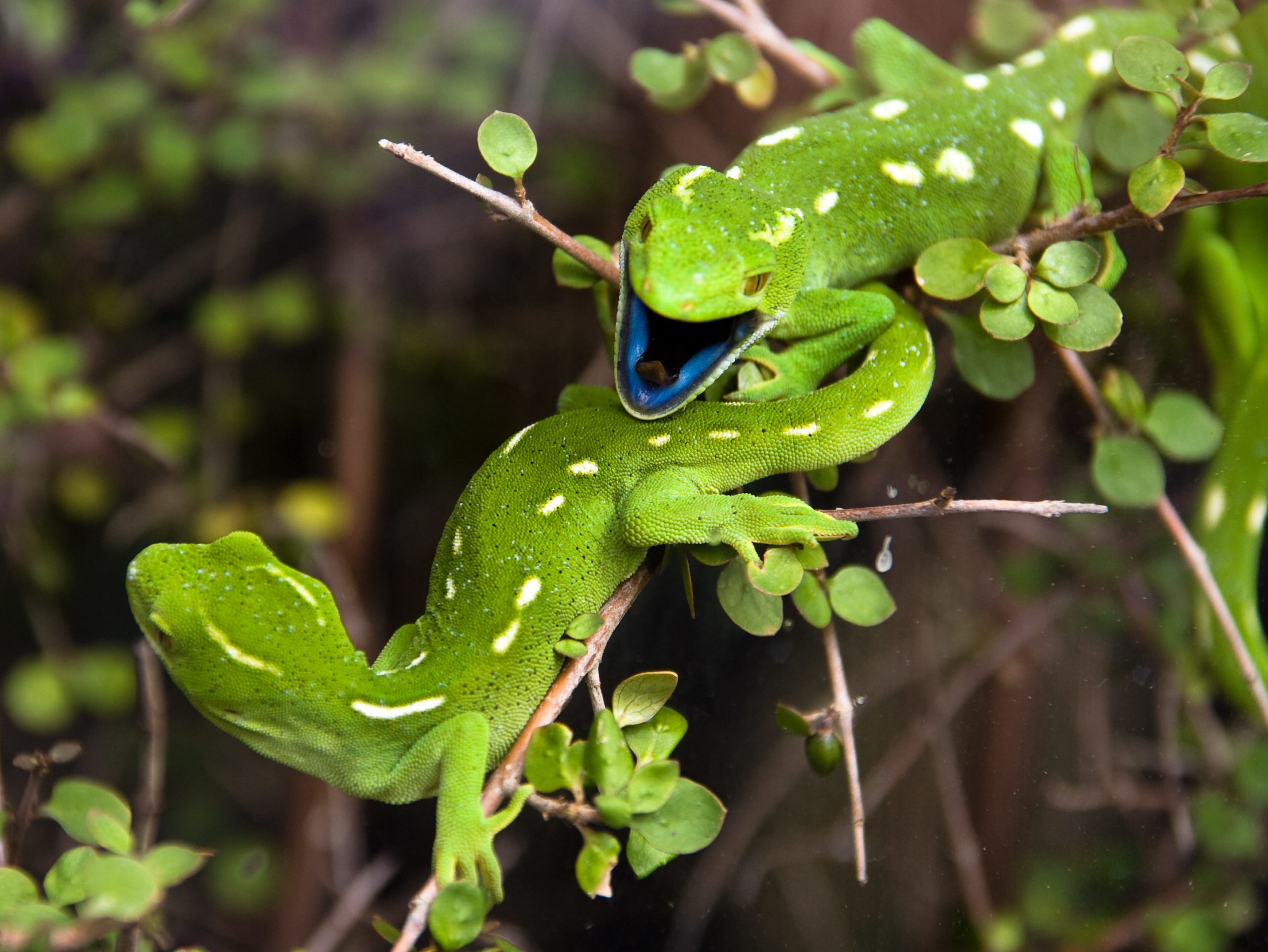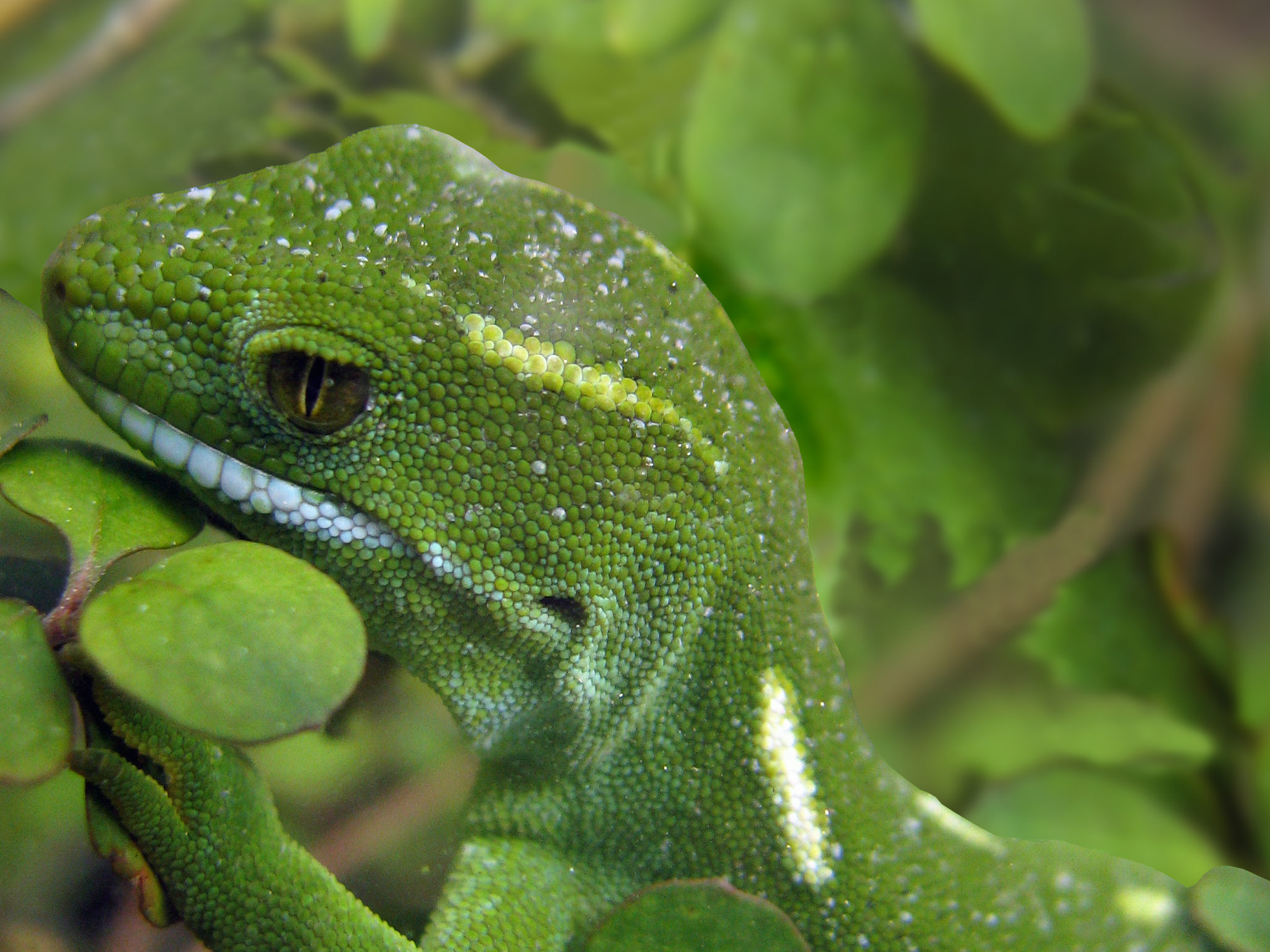Small, slow-moving in cold weather and with limited defenses other than camouflage and hiding, our skinks and geckos are vulnerable to predators – but efforts to relocate some of them to sanctuaries haven’t always been successful.

Researchers have been refining their methods, however, and a recent translocation of barking geckos suggests they’re definitely on the right track. It’s welcome news for the future of our sometimes-overlooked rare reptiles.
“Translocation success for animals can be measured in four stages, from initial survival and growth of individuals through evidence of reproduction and of population growth, to ultimate evidence of a viable population. Despite success rates of translocations for herpetofauna increasing from 19% to 41% over the past two decades, research on release strategies and improving site fidelity of translocated individuals is still required to further improve success. The penned release strategy (restricting dispersal for a pre-determined period of time to enable animals to habituate to the release area and form stable territories within the release site) shows promise as a tool for increasing the success rate of herpetofaunal translocations, but has received little scientific attention.”
Studies on jewelled geckos (Naultinus gemmeus) previously published in 2014 and 2017, demonstrated that penned releases reduce initial dispersal and increase site fidelity. That may increase the chances of a population becoming established and growing.

Previous translocations of green geckos (Naultinus spp.) showed that ‘hard release’ – simply releasing them at the translocation site without any barrier to dispersal, mostly didn’t work.
“Initially, geckos were hard-released into new sites; that is, they were placed in suitable habitat without a barrier to dispersal. Despite multiple attempts and follow-up surveys, few previous green gecko translocations could be considered successful. Nine hard releases over 1994–2010 of > 150 individual Naultinus geckos resulted in only three individuals being re-sighted, albeit with a variable amount of search effort; all of these hard-release translocations are considered failures.”
We need to start getting it right.
“Many green gecko populations have undergone decline in numbers and locations due to predation by introduced mammals and wasps, habitat modification, introduced avian predators and poaching for illegal trade, yet little research on their ecology exists and this is needed for effective conservation management.”
The barking gecko (Naultinus punctatus, also known as the Wellington green gecko) is one of nine species of Naultinus green geckos endemic to New Zealand. It reaches 95 mm snout-vent length and is distributed over the southern half of the North Island. It is considered ‘Vulnerable’ under IUCN threat listing criteria and ‘At risk, Declining’ under the New Zealand Threat Classification System. It was the focus of the current research project.

“The population we studied is on Mana Island, a 217 hectare Scientific Reserve within the natural range of barking geckos, from which introduced mammalian predators have been eradicated. Previous hard-release translocations of barking geckos to Mana Island appear to have failed. Forty-eight barking geckos (29 wild-sourced and 19 ex-captive) were translocated to the same area of habitat on Mana Island between 1998 and 2005. These geckos comprised 16 females, of which five were gravid, 27 males and five sub-adults and were hard-released in eight batches comprising 1–20 individuals. None of these 48 barking geckos have been re-sighted despite significant search effort, including a 10-day targeted search by experienced herpetologists in 2008.”
In November 2018, a further 19 barking geckos were translocated to Mana Island, but this time the release was done a little differently. The geckos were placed in a temporary holding pen containing suitable habitat for a period of three months before removing the pen, a techniques that had previously been successful for jewelled geckos.
“We aimed to:
- determine whether barking geckos translocated into a pen decrease area used over a three-month period following release, as has been observed for N. gemmeus;
- evaluate whether barking geckos remain in the release area immediately following removal of the pen; and
- collect incidental data on habitat use by barking geckos, for which little ecological information is known as evidenced by the ‘data poor’ qualifier applied to their national threat ranking of ‘At Risk: Declining’.”

Members of the Friends of Mana Island Trust constructed the release pen, based on best practice techniques for the translocation of green geckos.
“The pen was 0.80 m high and constructed of Animex Fencing material (animexfencing. com), with an inward-facing overhang of 0.10 m and had 1 m grass buffers either side to prevent dispersal via overhanging vegetation. The pen surrounded an irregular-shaped, approximately 100 square metre area of suitable habitat, consisting of dense bush and shrubs. Pōhuehue (Muehlenbeckia complexa), mingimingi (Coprosma propinqua), and mānuka (Leptospermum scoparium) dominated the vegetation community surrounding the penned area.”
In November 2018, ten male and nine female barking geckos were translocated to Mana Island. All came from the Wellington region, with 16 sourced from captivity and three “salvaged from development”.
“Of the captive geckos, four males were born in 2014; three males and seven females were born in 2015; and one of each sex was born in 2016. Dorsal images of each gecko were used for individual identification, which proved accurate for barking geckos.”
The geckos were then closely monitored.
“We used four distinct monitoring periods that ranged between 6 and 15 days long. The monitoring periods were: (1) 6 days from 2 November 2018, (2) 10 days from 28 November 2018, (3) 15 days comprising 6 days from 4 January 2019 and another 9 days from 23 January 2019 (data from two trips combined for analyses to achieve sample size), and (4) 15 days from 2 February 2019.”
“Each monitoring session involved walking around the penned-area systematically for four 25-minute stints over a 3 hour period, carefully searching the vegetation for geckos. The remaining time during this 3 hour period was used to search the 30-metre wide strip of habitat immediately surrounding the pen to look for any geckos that had escaped the pen, using the same technique. All searching was done in weather conditions considered favourable for gecko emergence.”
When an individual was found and identified using photographs, its location was marked with its corresponding ID.

“Repeat observations became the subsequent reference points, which were marked before we measured the horizontal distance and bearing from previous locations. These spot locations eventually provided a pathway for the movements of all 19 individuals.”
The researchers evaluated the effect of penning on area use by geckos over a three-month penned period followed by a two-week un-penned period. They aimed to determine whether barking gecko area use decreased over time, which can be an early indication of territory establishment.
“Search effort involved a total of 75 monitoring sessions totalling 225 hours during 46 days across the 3.5 month period beginning at release in November 2018 and concluding two weeks after removal of the pen in February 2019. We obtained a total of 420 re-sightings of the 19 geckos released (range = 5–62 sightings per gecko). This comprised of 144 sightings of the 10 male geckos and 276 sightings of the nine female geckos. All 19 geckos released were re-sighted at least once in the first and second monitoring periods, 16 were re-sighted in the third monitoring period and 13 were seen in the final monitoring period, after removal of the pen.”
The average barking gecko area use decreased significantly throughout the study – as had happened with previous work on jewelled geckos. That suggested the geckos were establishing territory and that penning is an effective tool for translocations of green geckos.
“Our study is the first step towards measuring translocation success in barking geckos, and would ideally be followed up by a longer-duration study for this species that involves a simultaneous penned release and hard release. . Green geckos can reach high densities in the wild (e.g. jewelled geckos occur at densities of > 500 per hectare) and naturally display small home ranges and movements. Therefore, it seems unlikely that size of the penned area was restricting territory establishment by barking geckos, though we acknowledge the lack of basic ecological knowledge of this Naultinus species restricts inference.”
The study also showed where barking geckos prefer to hang out – useful to know for any future monitoring projects.
“Barking geckos were found disproportionately on mānuka, pōhuehue and tauhinu relative to their availability, which is informative for future monitoring of the species based on visual searching. Barking geckos are well hidden in these thick plants, which offer feeding (flies and nectar) opportunities and probably protection against avian predators.”
In contrast to previous, failed attempts to translocate barking geckos to Mana Island, most individuals in this study survived in the initial months following translocation and several were regularly resighted.
“Our research further supports penning as a translocation tool to increase initial contact between founders and potentially improve the likelihood of population establishment, which is the basis for the current best practice technique. The penned release strategy may ultimately lead to improved translocation success for green geckos and other lizards.”
The full research report is published in the New Zealand Journal of Ecology and is freely available online.
Penned release reduces area use by translocated barking geckos (Naultinus punctatus) (2021)

